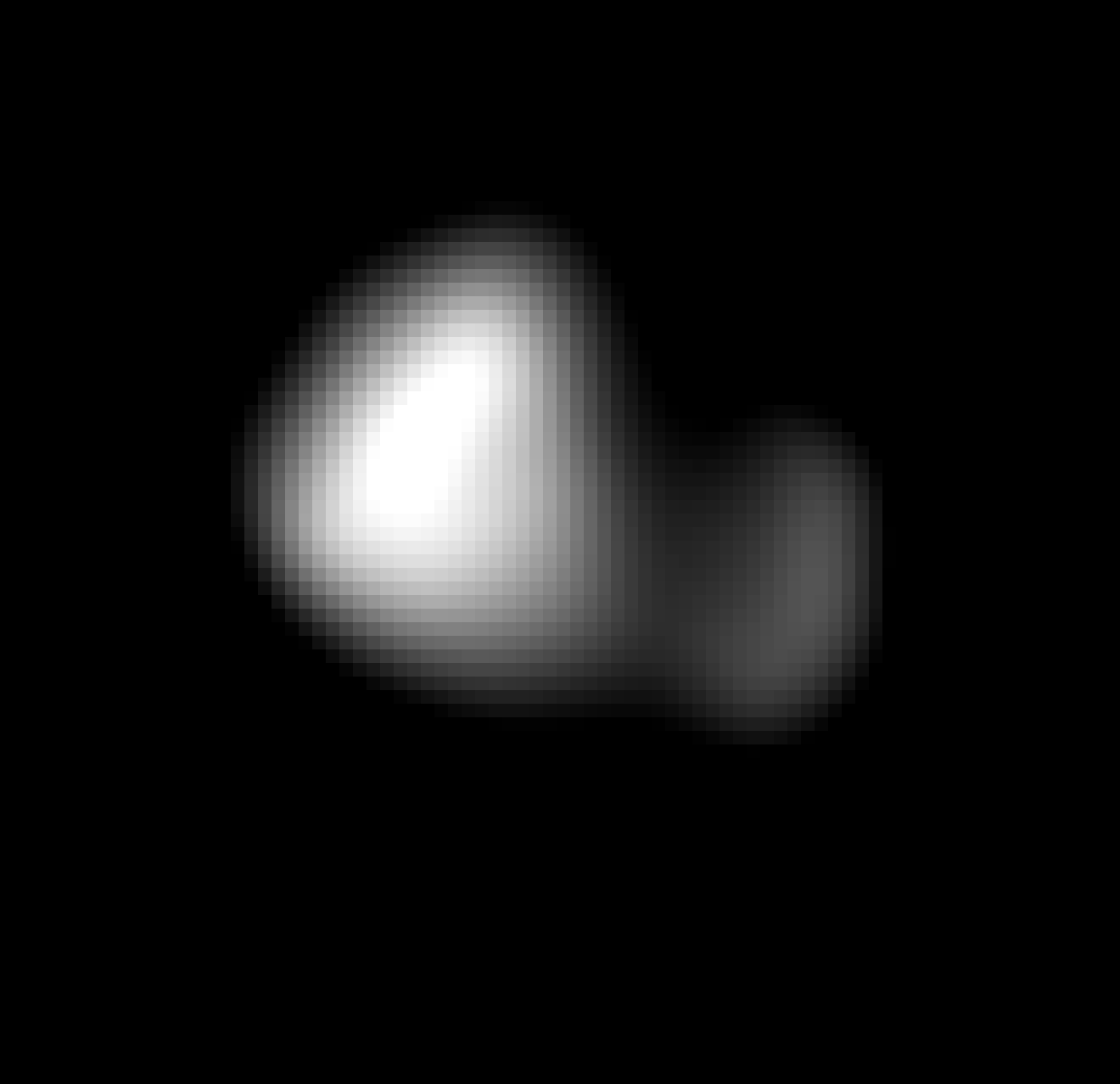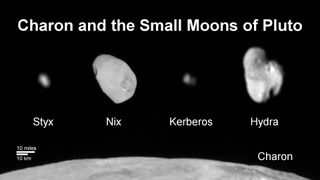
Pluto's tiny satellite Kerberos has gotten its first close-up.
NASA's New Horizons spacecraft has beamed home photos of Kerberos captured during the probe's historic flyby of Pluto on July 14. The newly received images show that Kerberos is smaller and much brighter than researchers had expected.
"Once again, the Pluto system has surprised us," New Horizons project scientist Hal Weaver, of the Johns Hopkins University Applied Physics Laboratory in Laurel, Maryland, said in a statement. [NASA's New Horizons Mission in Pictures]
Furthermore, the photos — which came down to Earth on Tuesday (Oct. 20) — reveal that Kerberos is composed of two lobes, one about 5 miles (8 kilometers) wide and the other 3 miles (5 km) in diameter. The moon may therefore have formed from a long-ago merger of two objects, New Horizons team members said.
Pluto has five moons: Charon, Nix, Hydra, Kerberos and Styx. Charon was discovered in 1978; researchers using NASA's Hubble Space Telescope first spotted Nix and Hydra in 2005 and Kerberos and Styx in 2011 and 2012, respectively.
All of these satellites are tiny except Charon, which, at 753 miles (1,207 km) in diameter is more than half as wide as the dwarf planet itself.
Astronomers knew Kerberors was small when they first discovered the satellite, but its true size comes as a surprise. Previous Hubble observations had shown that Kerberos exerts a strong gravitational influence on neighboring moons.
Get the Space.com Newsletter
Breaking space news, the latest updates on rocket launches, skywatching events and more!
Scientists therefore "theorized that Kerberos was relatively large and massive, appearing faint only because its surface was covered in dark material," New Horizons team members wrote in the same statement. "But the small, bright-surfaced Kerberos now revealed by these new images show[s] that that idea was incorrect, for reasons that are not yet understood."

Like Nix, Hydra and Styx, Kerberos appears to be coated by relatively pure water ice, researchers said.
New Horizons has now allowed researchers to learn the size and shape of all of Pluto's satellites. Nix and Hydra measure 33 miles (54 km) and 27 miles (43 km), respectively, in their longest directions, while Styx is just 4.5 miles (7 km) wide.
New Horizons is still sending its vast flyby dataset back to Earth. All the images and measurements from the July 14 close encouter should be down at mission control by next August or September, mission team members have said.
The spacecraft may have another flyby in its future. On Thursday (Oct. 22), New Horizons performed a 16-minute engine burn, the first of four maneuvers that will put it on course for a small object called 2014 MU69. New Horizons will observe 2014 MU69 during a close encounter on Jan. 1, 2019, if NASA approves and funds an extended mission for the probe.
Follow Mike Wall on Twitter @michaeldwall and Google+. Follow us @Spacedotcom, Facebook or Google+. Originally published on Space.com.
Join our Space Forums to keep talking space on the latest missions, night sky and more! And if you have a news tip, correction or comment, let us know at: community@space.com.

Michael Wall is a Senior Space Writer with Space.com and joined the team in 2010. He primarily covers exoplanets, spaceflight and military space, but has been known to dabble in the space art beat. His book about the search for alien life, "Out There," was published on Nov. 13, 2018. Before becoming a science writer, Michael worked as a herpetologist and wildlife biologist. He has a Ph.D. in evolutionary biology from the University of Sydney, Australia, a bachelor's degree from the University of Arizona, and a graduate certificate in science writing from the University of California, Santa Cruz. To find out what his latest project is, you can follow Michael on Twitter.











